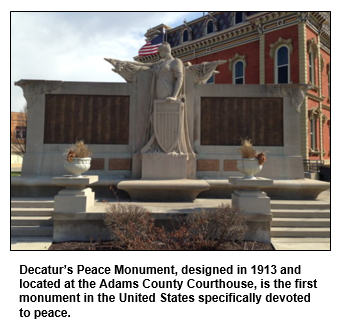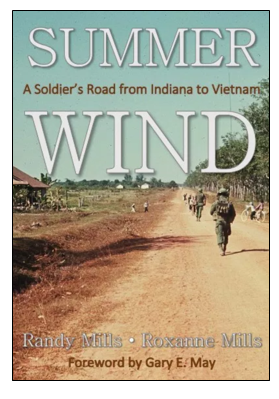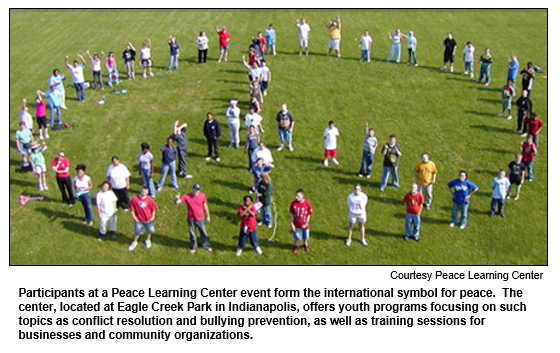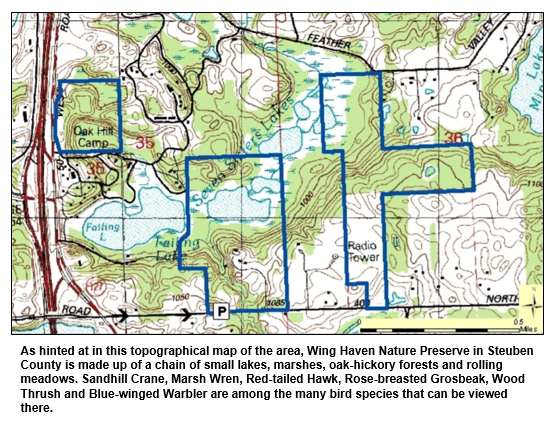Saturdays, noon to 1 p.m. ET on WICR 88.7 FM.
Or listen live from anywhere on WICR Online!
Our call-in number during the show: (317) 788-3314
Did you miss our show, "Early era of the Indiana Pacers"? Listen to the podcast.
December 9, 2017
Peace heritage in Indiana
This being the season of peace and goodwill, our show will explore the heritage of peace-making in the Hoosier state. Specifically, we'll be looking at the resolution of conflicts ranging from bullying among children to disputes among adults in the workplace and neighborhood. Nelson will be joined in studio by two guests from groups with deep traditions in peace advocacy:
Tim Nation, co-founder and executive director of the Peace Learning Center, which is celebrating its 20th anniversary. Located at Eagle Creek Park in Indianapolis, the Peace Learning Center is a community education organization that offers youth programs focusing on such topics as conflict resolution and bullying prevention, as well as training sessions for businesses and organizations. In 2015, the Peace Learning Center started hosting peace-building workshops at retirement communities.
- And Keni Washington, chairman emeritus of the Indianapolis Peace & Justice Center. Founded 33 years ago by a Quaker minister and his wife, the peace center is a nonprofit advocacy organization and is housed at Broadway United Methodist Church.
We'll look into Indiana's past to examine efforts at conflict resolution and peacemaking. One such effort: during the Civil War, Quakers in Indiana struggled with the dilemma of whether to take up arms for the Union cause. Their ethical quandary later inspired a major storyline in the novel The Friendly Persuasion, a national bestseller written in 1945 by acclaimed author Jessamyn West, a native of Jennings County, Ind. In 1956, a movie version starring Gary Cooper was released.

Our guest Tim Nation, a native of Terre Haute, is the co-chair of the Indianapolis Race and Cultural Relations Leadership Network. According to Tim, the Peace Learning Center has worked with 200,000 children and adults since it was founded in 1997. The center now has programs in eight cities and several foreign countries.
"At Peace Learning Center," Tim says, "we believe everyone can be a peacemaker."
Last week, Indianapolis Colts players and Indianapolis Metropolitan Police Department officers visited the Peace Learning Center to work with sixth graders from Eleanor Skillen Elementary School (Indianapolis Public School No. 34). According to an account in The Indianapolis Star, the police officers helped teach "safe and simple ways to manage anger, solve problems and develop an understanding of different perspectives." Colts players who participated included Kenny Moore II, a rookie cornerback.

At the Indianapolis Peace & Justice Center, founders during the 1980s included the late Jane Haldeman, who died in 2009, and her husband Ron Haldeman, a Quaker minister. The center advocates for peace-focused responses to national, state and local policy issues.
Other Hoosier peace heritage notes:
- In northeastern Indiana, the town of Decatur has a Peace Monument. Designed in 1913, the monument is located at the Adams County Courthouse and is the first monument in the United States specifically devoted to peace.
- A portion of the Cultural Trail in Indianapolis is called the Glick Peace Walk. Named for the late philanthropists Gene and Marilyn Glick, who were major benefactors of the Cultural Trail, the peace walk is the portion of the trail on Walnut Street between Meridian Street and Capitol Avenue; it celebrates peaceful contributions to humanity.
- A Peace Dove sculpture is perched in the atrium of the central branch of the Indianapolis Public Library. Its sculptor, Indianapolis firefighter Ryan Feeney, created the metal symbol of peace from confiscated firearms. Ryan also created the sculpture of Peyton Manning unveiled two months ago at Lucas Oil Stadium. Ryan was a Hoosier History Live guest in October 2016.
History Mystery

Although hailed as a military commander for his triumphs even when his forces were greatly outnumbered, he also was known for his leadership of the Miami tribe during times of peace. He struck alliances with white leaders and sought to avoid the conflicts that led to the disastrous Battle of Tippecanoe. The Miami leader died at his lodge in Indiana in 1812.
Question: Who was the leader? Hint: He was not Tecumseh, a great leader who was Shawnee, not Miami, and lived in Tippecanoe County, not northeastern Indiana.
The call-in number is (317) 788-3314. Please do not call into the show until you hear Nelson pose the question on the air, and please do not try to win the prize if you have won any other prize on WICR during the last two months. You must also be willing to give your first name to our engineer, and you must answer the question live on the air.
The prize is a gift certificate to Story Inn in Brown County, courtesy of Story Inn, as well as a pair of tickets to the Indiana History Center, courtesy of the Indiana Historical Society.
RoadTripper: Getting outdoors in Steuben County
Guest Roadtripper and DNR volunteer Terri Gorney of Ft. Wayne encourages Hoosiers to get outside and explore natural areas in any season, including winter.
“Everyone knows Pokagon State Park, but there are two wonderful nature preserves near Pokagon in Steuben County in northeast Indiana that are not so well known and are definitely worth exploring," says Terri.
One is Wing Haven, a gem of a property that is owned by Acres Land Trust and includes an old stagecoach inn and wonderful prairie lands. It's right on the Seven Sisters Lakes, an undeveloped lake chain in Steuben County. Wing Haven, a birding destination, was a gift from Helen Swensen, whose 19th century log buildings are now used by the property's caretakers.
And then there's McClure Reserve, which was donated in 1957 by Maurice McClure in an era before land trusts. McClure Reserve is owned by Steuben County and includes 80 wooded acres with spectacular pine trees. The reserve is maintained by volunteers and includes the best old-growth forest in northeast Indiana, including large tulip trees and red and white oaks.
Terri stresses that winter is a great time to explore the outdoors in Indiana and experience the colors and textures of the natural landscape in its dormant period. As she notes, "Our four seasons give us an ever changing palette!"
Help keep Hoosier history alive!
A big holiday thanks for your support
As you contemplate your end-of-year giving, please consider supporting the efforts of Hoosier History Live to bring its innovative approach and unique perspective to the widest possible audience.
 All producers of original media content are trying to figure out how to survive financially, and Hoosier History Live is no exception. What do you pay for your daily newspaper or cable TV? We offer our rich content for "free," but the reality is that quality programming such as ours takes money to produce.
All producers of original media content are trying to figure out how to survive financially, and Hoosier History Live is no exception. What do you pay for your daily newspaper or cable TV? We offer our rich content for "free," but the reality is that quality programming such as ours takes money to produce.
Our listeners, readers and underwriters have pretty much demanded that our shows be available as podcasts, and we have answered that demand. We hope that internet distribution will eventually allow us to reach a wider audience and attract more corporate sponsors, but meanwhile the podcast production process adds to our costs.
If you value what we are doing, please consider making a contribution to our production expenses. Think of it as your cable TV bill or newspaper subscription, but voluntary.
Just go to the "Support the show" page on our website and hit the "Donate" button; you can contribute any amount you like, using a credit card or PayPal.
Or, you can make out a check to "Hoosier History Live" and mail it to:
Hoosier History Live
P.O. Box 44393
Indianapolis IN 46244-0393
Thank you!
Nelson Price, host and historianMolly Head, producer/project manager, (317) 927-9101
Michael Armbruster, associate producer
Cheryl Lamb, marketing and administrative manager
Richard Sullivan, senior tech consultant
Pam Fraizer, graphic designer
Garry Chilluffo, special events consultant
Please tell our sponsors that you appreciate their support!

 Acknowledgments to Monomedia, Visit Indy, WICR-FM, Fraizer Designs, Heritage Photo & Research Services, Henri Pensis, Chris Shoulders and many other individuals and organizations. We are an independently produced program and are self-supporting through organizational sponsorships and individual contributions. We do not receive any government funding. Visit our website to learn how you can support us financially. Also, see our Twitter feed and our Facebook page for regular updates.
Acknowledgments to Monomedia, Visit Indy, WICR-FM, Fraizer Designs, Heritage Photo & Research Services, Henri Pensis, Chris Shoulders and many other individuals and organizations. We are an independently produced program and are self-supporting through organizational sponsorships and individual contributions. We do not receive any government funding. Visit our website to learn how you can support us financially. Also, see our Twitter feed and our Facebook page for regular updates.
Thank you!
We'd like to thank the following recent, new and renewal contributors whose donations help make this show possible!
- Jim and Nancy Johnson.
- Carol Bacon.
- Myrtle Bryant.
Dec 16, 2017 - upcoming
Vietnam War and Hoosiers: special perspectives
Following our show last month featuring special perspectives on World War II - and in the wake of the recent Ken Burns documentary - we will share insights about the Vietnam War and its impact from the vantage point of Hoosiers.

So will Ken Marshall, a Franklin resident who hosts a Saturday morning talk show for White River Broadcasting that airs on WCSI-AM in Columbus. Ken, who grew up in Indianapolis, enlisted in the Army in 1970, trained as a medic and was assigned to a hospital in Okinawa. He treated Army soldiers, Marines and others injured in Vietnam. Ken also became a disc jockey on a radio station in Okinawa, helped start a community theater funded by the Army and worked on a USO tour that visited islands in the Pacific Ocean during the war.
In addition to exploring the experience of Hoosiers overseas during the war, we will delve into life on the homefront in Indiana, including the effects of the draft on Hoosier families. In Summer Wind, Randy and Roxanne Mills point out that the draft in Princeton and surrounding Gibson County "was not always even-handed;" local sports heroes, for example, often were exempted from military service when doctors discovered what they termed old sports injuries. Of the 27 million American men who came of draft age during the war, they write, "60 percent, or 16 million, escaped military service."
Their book emphasizes that many of those who served in the military were from blue-collar families, including Dick Wolfe. An avid drag racer, he had dropped out of Princeton High School. Next came the unexpected pregnancy of a 17-year-old girlfriend and the birth of his son in March 1967. After that, Dick Wolfe returned on a furlough from infantry training to get married.
His letters in Summer Wind were written from July 1967 to January 1968, when he was killed on patrol amid confusing circumstances. During the show, Roxanne and Randy Mills will discuss the challenges involved in writing factual accounts of combat deaths. In addition to Dick Wolfe's letters, Randy and Roxanne used military reports, diary and journal entries and a series of interviews to write Summer Wind. The book's title refers in part to a Frank Sinatra hit song of the era played frequently on transistor radios carried by Dick Wolfe and fellow members of Alpha Company, Second Battalion of the 18th Infantry.
© 2017 Hoosier History Live. All rights reserved.
|








